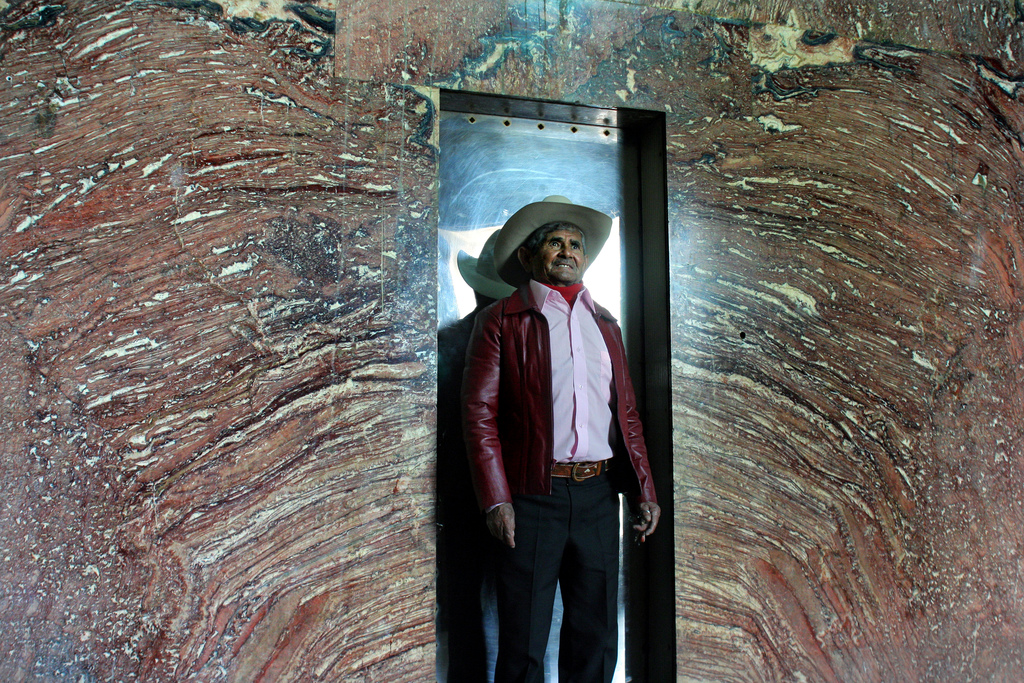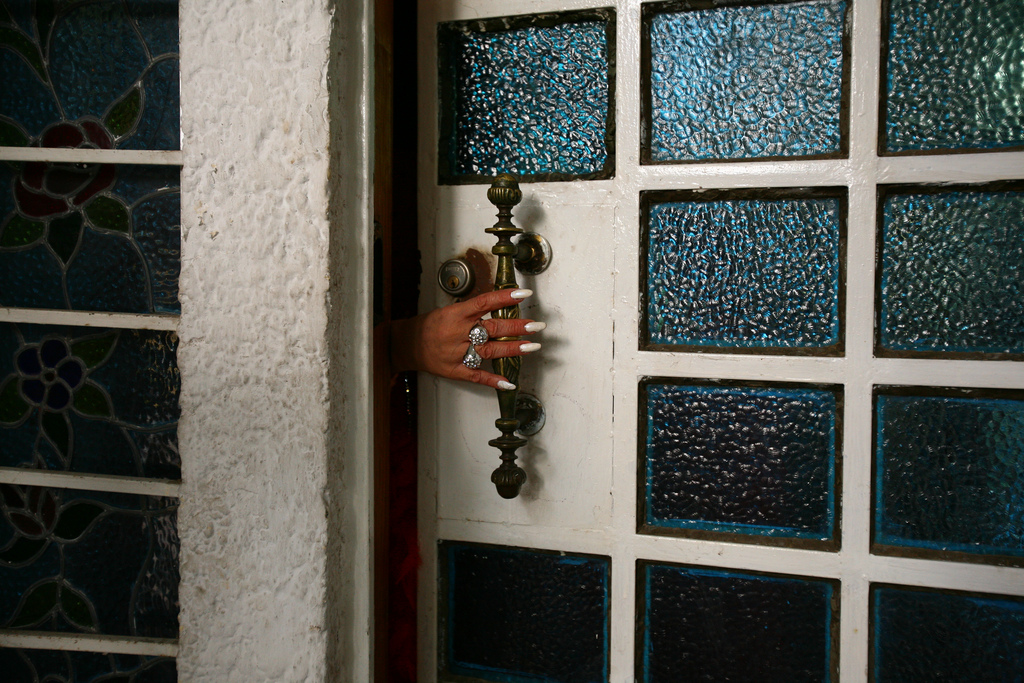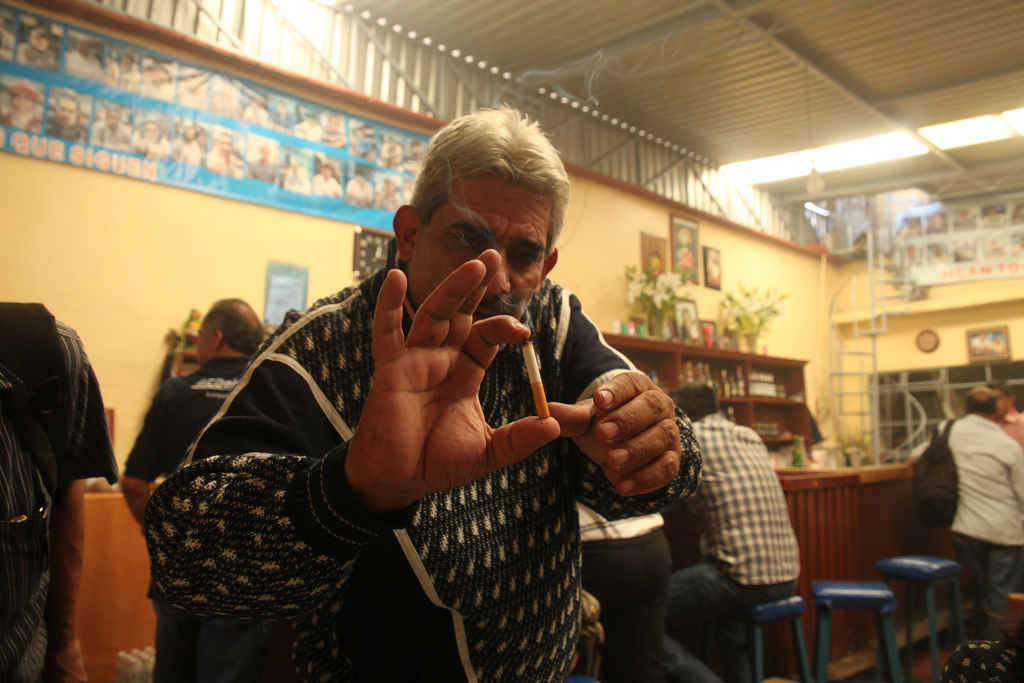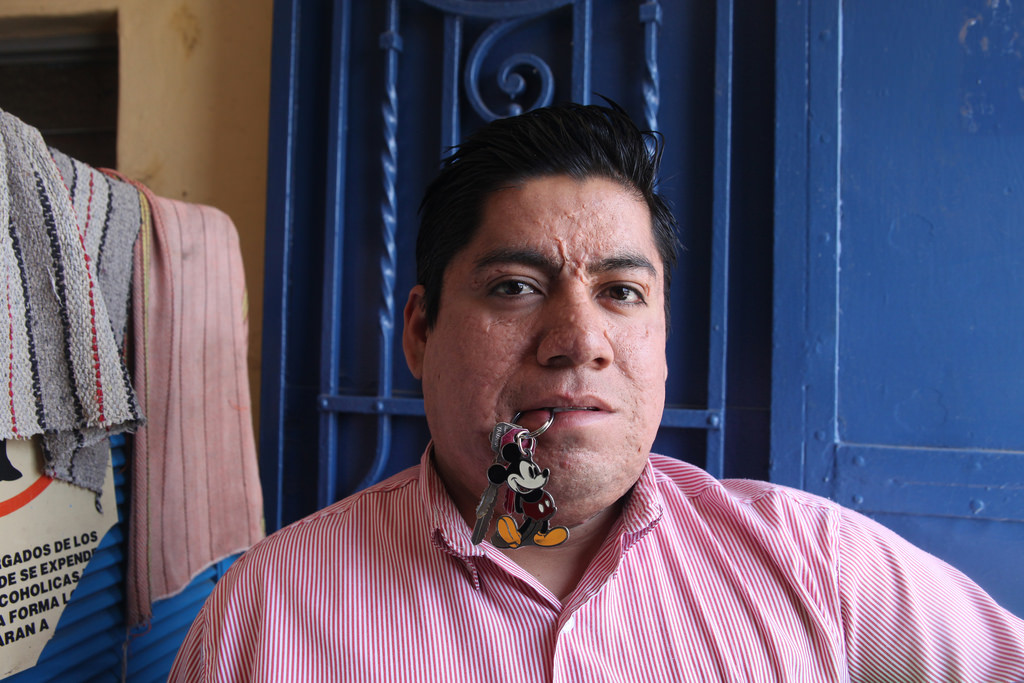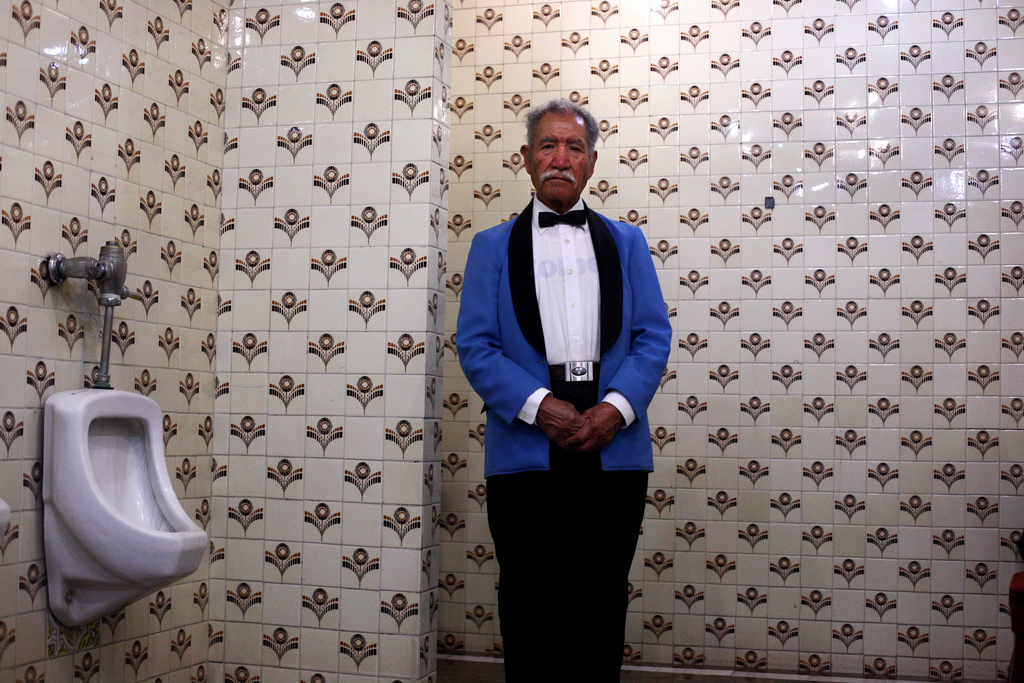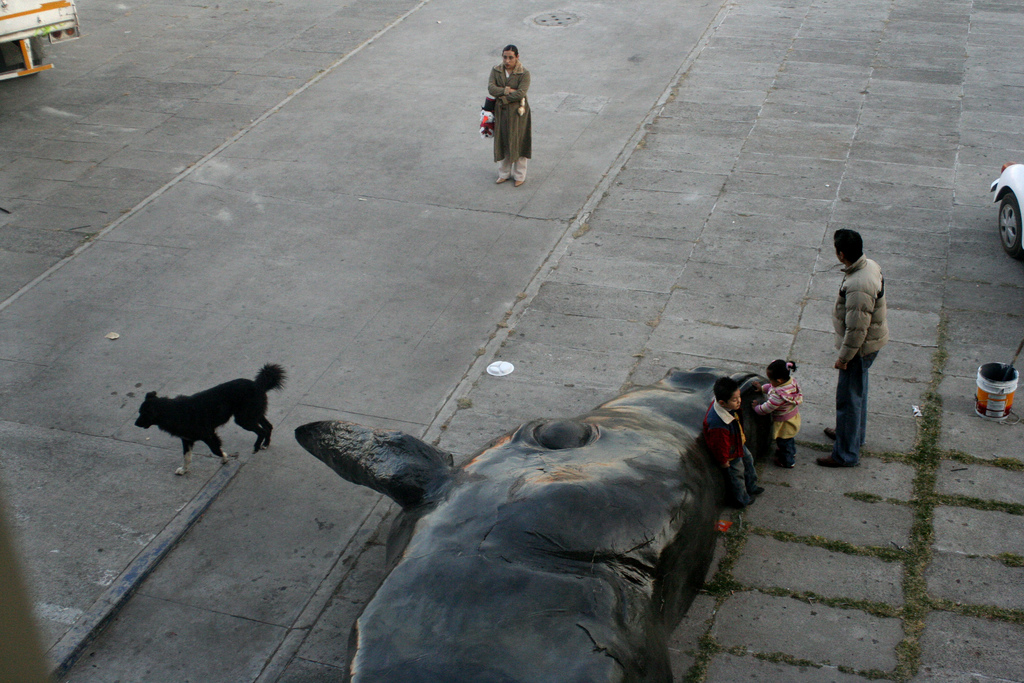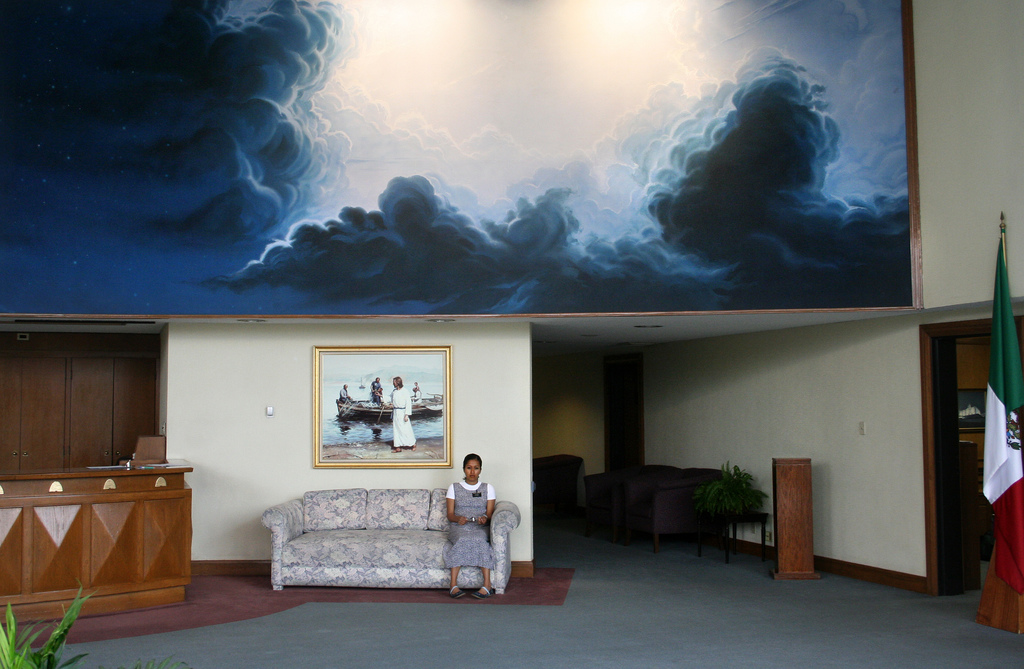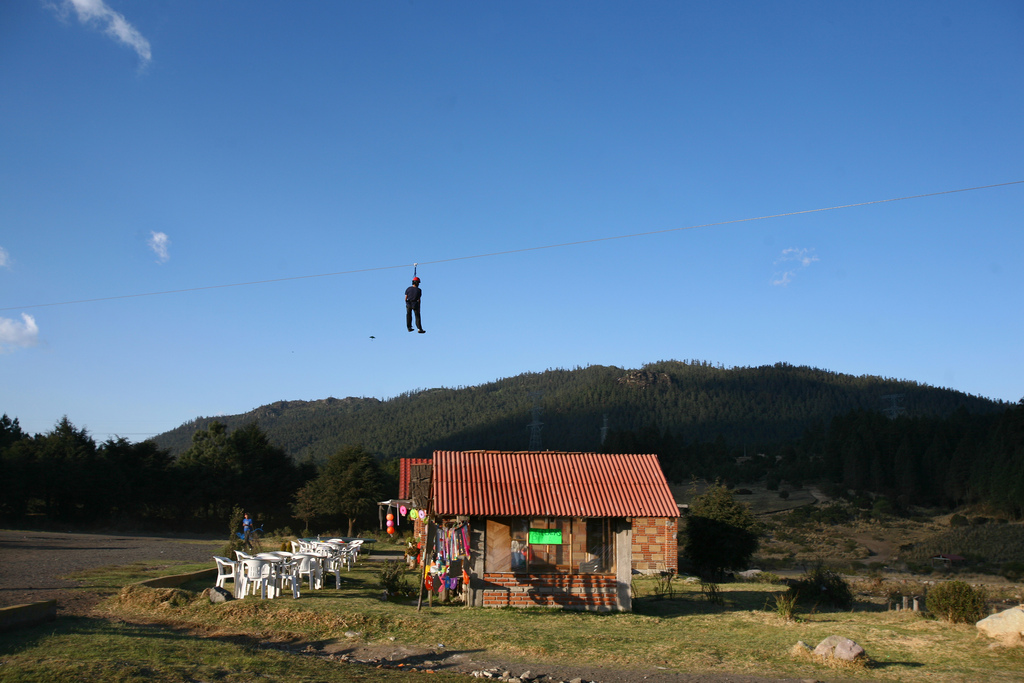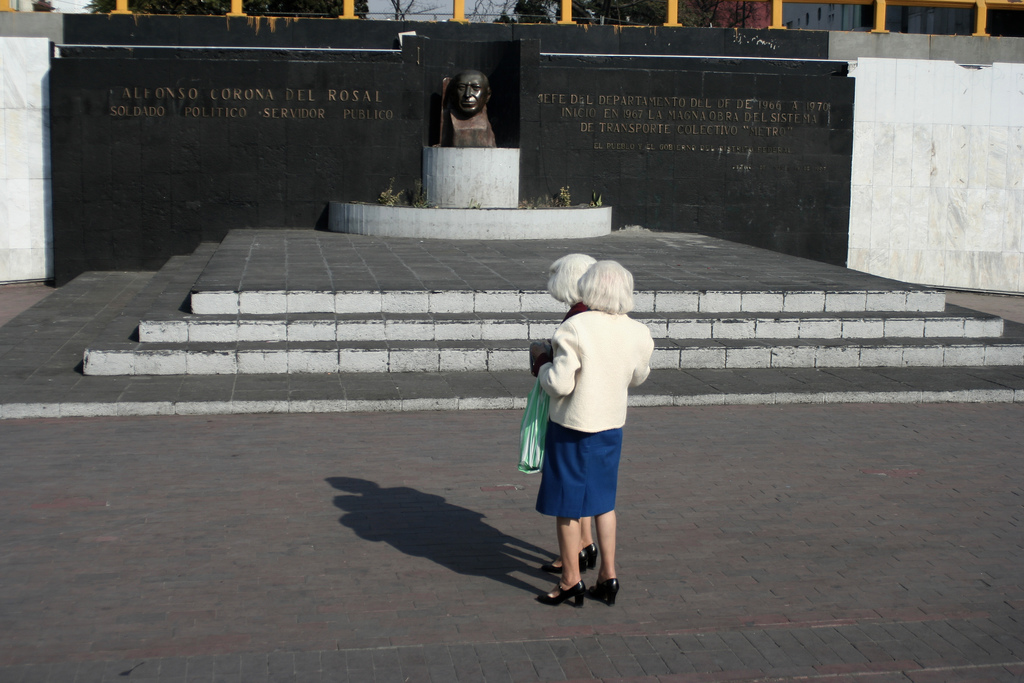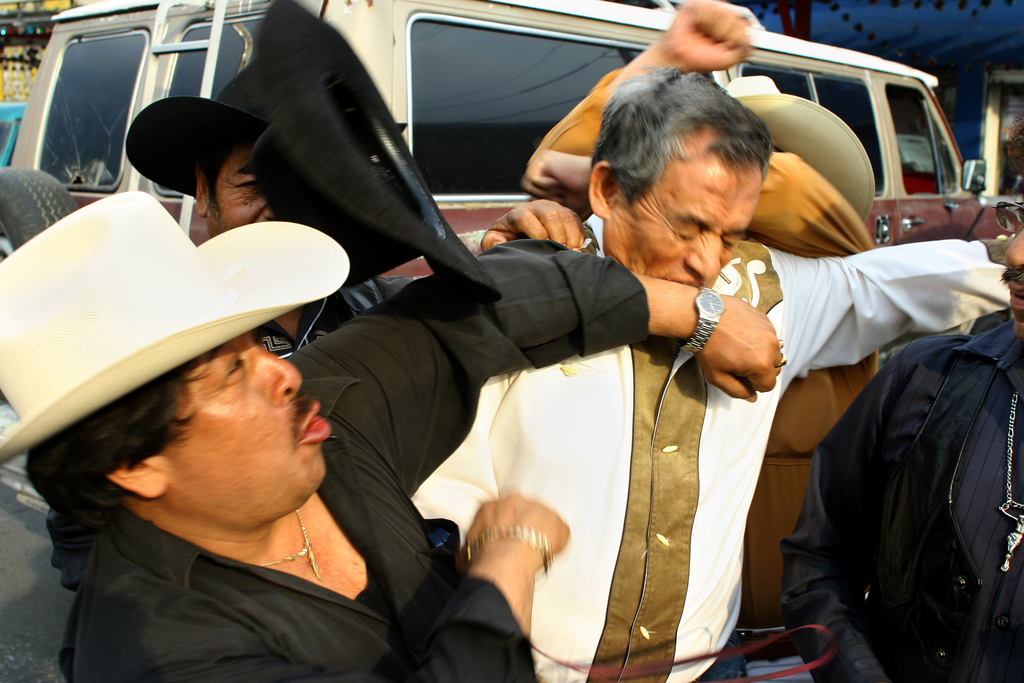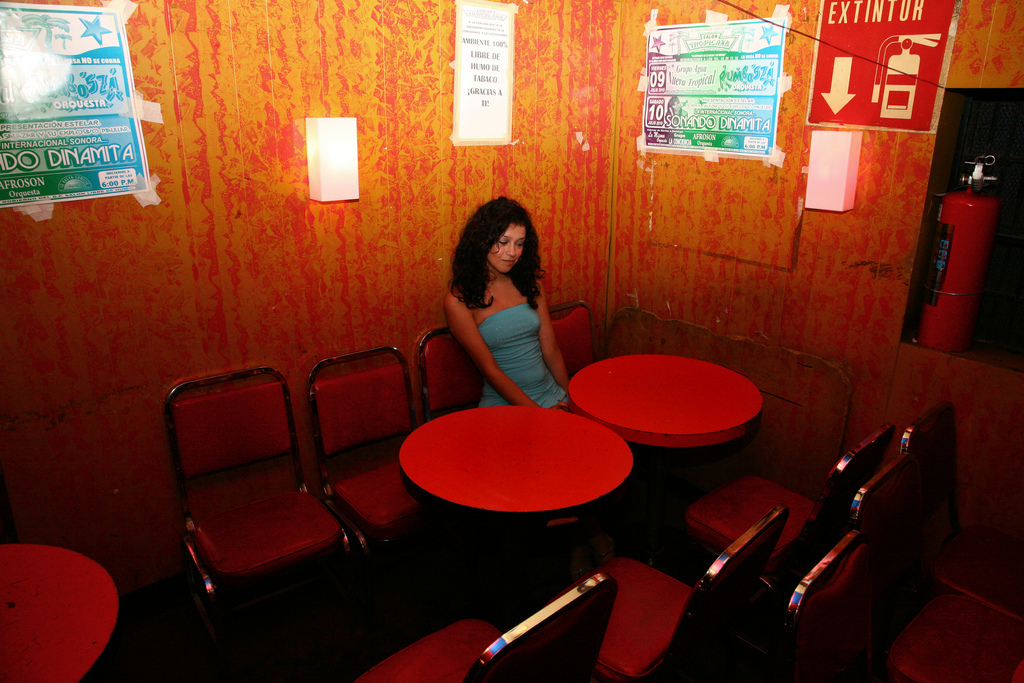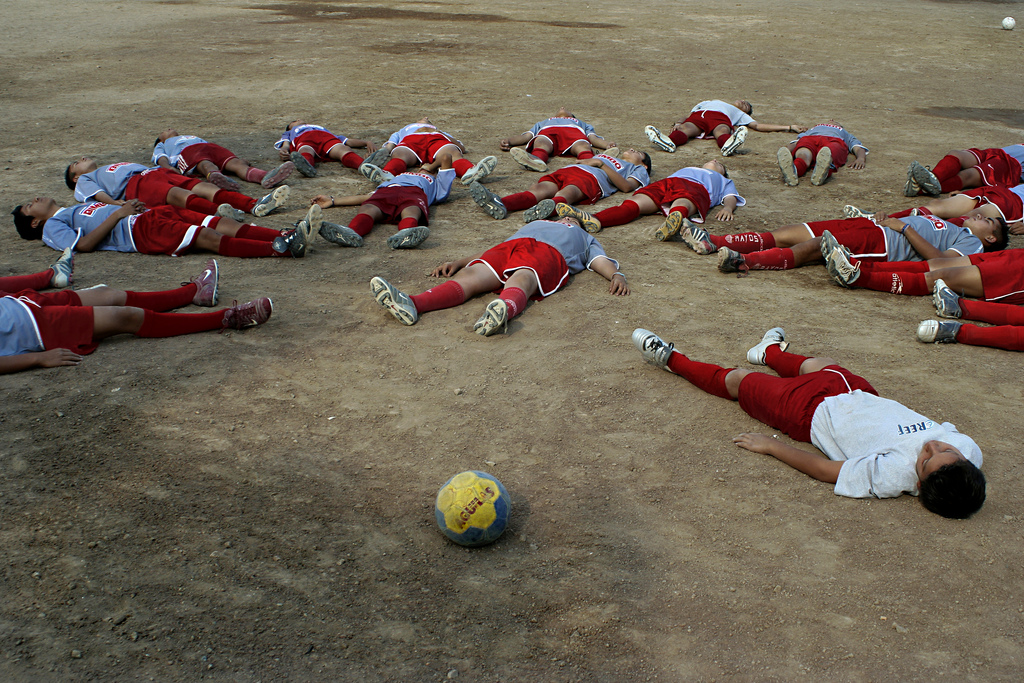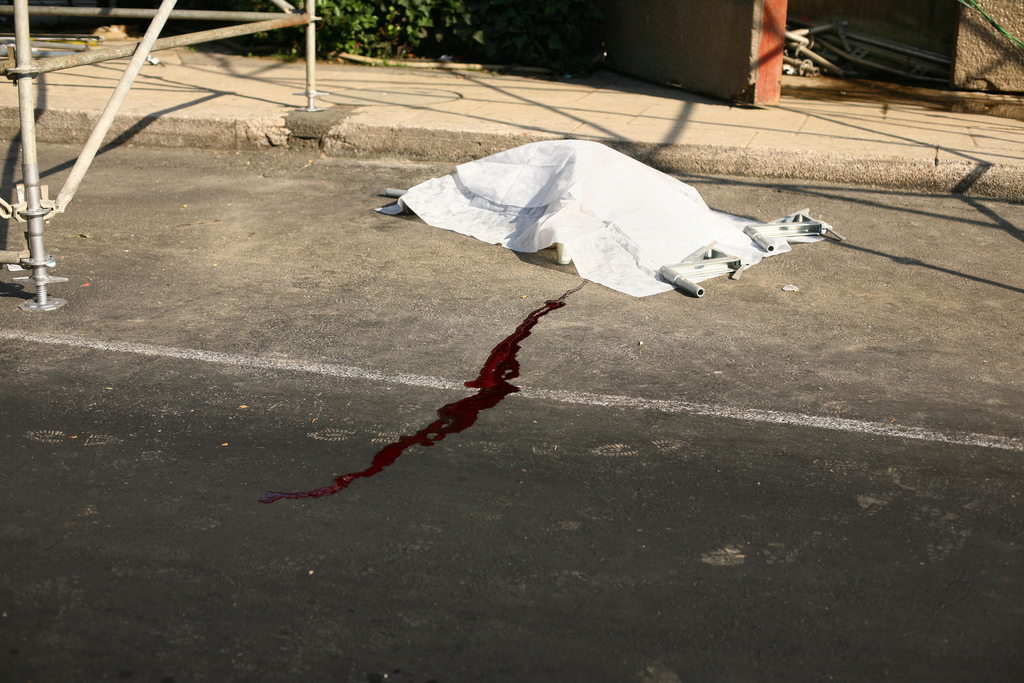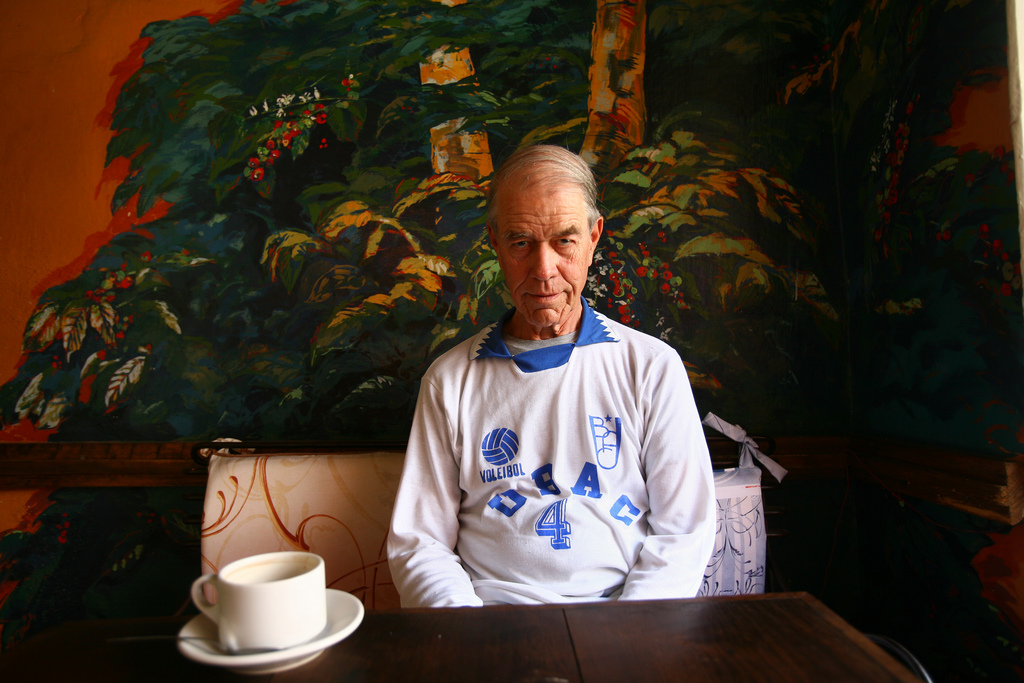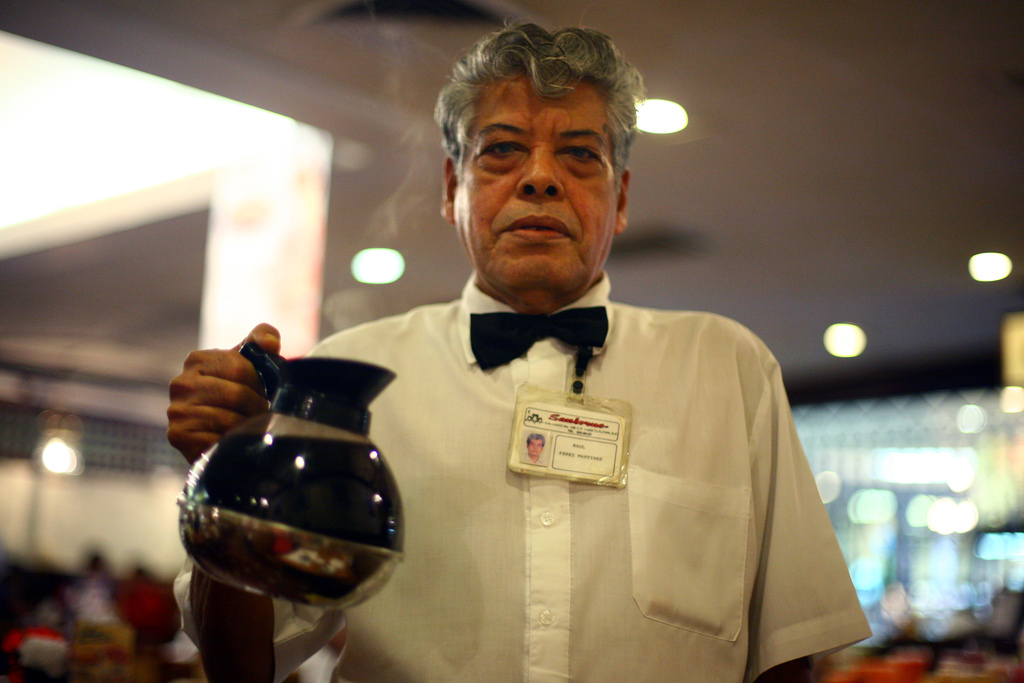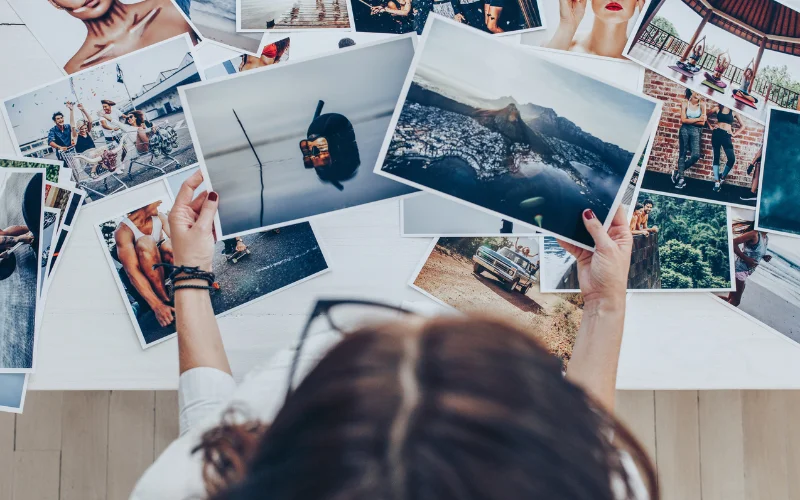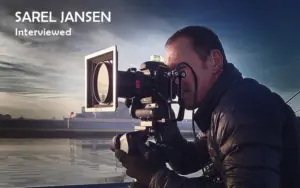The interview that follows has been edited for readability. The editing has been limited to concerns of form. Mark Alor Powell’s one of great street photographers answers and my questions have in no way been abridged. The opposite is true, in fact. Where story and metaphor required refining or expanding, story and metaphor have been refined or expanded.
The result is an honest attempt to imagine how two strangers, strangers who have never heard each other’s voice or seen each other’s face, and who live thousands of miles apart, would have spoken to each other if they had met one day. This interview may in fact be considered a true conversation. The conversation may in turn be considered a true fiction.
Mark Alor Powell lives and works in Mexico City. His newest photobook, Open at Noon, is out now.
Let’s consider from the beginning that our interview is both truthful and false. What is false is imagining that I could ever talk to you as though you could hear me from where I sit and write. You’re not here while I write. I’m not there as you read. What is truthful is imagining the possibility. That is, I’m going to ask you questions in a way that I normally wouldn’t because in my mind I’m right there. I’ll ask you questions that I would have asked if you and I were talking on a park bench in the middle of Mexico City. The sun might be setting. It might be midday. There are people walking in front of us: a couple of families, some children, and a handful of men who look down as they pass. You and I fantasize about the private worlds inside these men, imagine what could have made them look down. It is quiet and just right then I have a thought. I ask you, How has this year been to you? Have you had any really bad days recently? I’m thinking of those days that take everything out of you and send you back to your bed, reeling. Have you had any?
I was just in Oaxaca this past month where I put on a small photo show in a house located near the downtown. The house is owned by a friend of mine, a Zapoteco Indian and artisan who makes beautiful handwoven textiles and uses the space for his studio. His nickname in Zapateco is “Demon.” There is a small, unused laundry room in the back of the studio where you can find a broken ribbed basin used to wash clothes by hand and a great place to hang large photographs. There are also two large rooms to hang 2 large frames and 10 medium frames for the rest of the house. It is perfect for seeing some photographs in an authentic setting and justs needs a quick sweep.
The day (late morning) before the show, he takes me around town in this large, long brown van to see around town a little. I am sitting in the back, and every turn shows me the long shaft of the van’s perspective, the landscape, the road ahead, the van moving—it appears as though I am looking deep down through a world outside mine, when I’m actually just moving sideways and more sideways. We drink and pass around a homemade Mezcal (powerful stuff) out of a plastic water bottle. He talks Zapateco with his friend in the passenger side and a couple friends in the middle seats ahead of me. I have really no inspiration to photograph. Not even thinking that I had no inspiration, my camera just sits like a dead toad on my lap.
We end up at a cantina called La Poblanita. It’s a stark sky-blue building that opens at 8am and closes early at 6pm. As you enter, you are greeted by a lady, who’s probably 70 years old with really large legs and a yellow, clean-pressed floral dress. They call her “La Señora Poblanita.” She sits behind a table with paperwork and magazines, always keeping an eye on her patrons. The cantina is a family business and she is the boss. She lets her clients get drunk in a secure place, while kicking out any trouble makers with her broom stick. Within minutes of our arrival, a man is carried out of the place, blacked out—scarecrow shouldered between two men carrying his cowboy hat—he is rushed and put in a waiting taxi outside. The lady follows them to the door with the broomstick pinched under her arm. Everyday at exactly noon the lady puts on some catholic hymnal music, burns Copal incense, while her husband swings an old gold thurible. By rule, all drinking stops for 10 minutes while this goes on. Smoke fills every corner of the place, he swings it vigorously in some spots as if he was trying to chase something away. The cantina eventually starts up again and people get back to drinking. Right after the music stops, a large burly man perched on a stool at the far end of the bar comes toward me. He has bushy grey hair, with a heavy brow and a determined set of eyes. He open his hands and shows me two five peso coins and gestures for me with a curled finger to come join him at a table. He wants to show me his repertoire of bar tricks. I bring my camera out and sit across from him. Can I touch two coins between a glass without lifting it? Look how these drinking straws connect behind and through his belt without tying them. Can you untie them with one finger? Can I twist my hands in one movement while always keeping them together? I try all his tricks. He then pulls his lighter out, flicks it and inhales a blue flame deeply. He does it again. The flame goes into his mouth like a fast burning horn. He hands me the lighter without saying a word, and I do exactly what he does. I feel the flame as it strikes the back of my throat. The lady appears suddenly by our table and hits the man on the back of his legs with her broomstick and tells him to stop the tricks and get out immediately. I don’t understand why she is so upset with him. Is she there to protect me? He only pretends to leave, then comes back and tries to show me more tricks. He puts a coin in his mouth and opens it, inviting me into his mouth. Did it disappear or was it swallowed? The lady screams at him and forces him to the door with her broomstick. He finally leaves, hunkered down low, leaving fast, while trying not to get hit by the head of the broom.
The next day I wake up and swallow with huge clicking crash in my throat, I burned it pretty bad. The experience carried me away in a bad way. I then remember a took a couple pictures. One was just before I flamed my throat. It was this man just inside the door of the bar, a delivery driver with a truck load of beer kegs. He had a Mickey Mouse keychain in his mouth and face was full of scars of being burnt sometime in his past. The second picture was of the trickster himself, he pinches a lit cigarette lengthwise between his fingers.
Bad day. My throat is now just getting better.
I wanted to talk here with you because I wanted to escape the patterns of thinking that I usually force myself into. I wanted to know certain things without asking about them in the same way. As you cough, I have another thought and I ask you: What if photographic style, or really any style, is just the mind’s patterns that satisfy us with a result that reminds us of those that we’ve achieved in the past? As breaking your arm and then shifting it to just the right angle, side, and position will ease your pain, what if style is the coordinates of creating comfortable work?
Yes, I think style is what is natural to you, but perhaps it’s best to try to make interesting, or even “bad” photographs, ones that may give you a clue into what you may want to say differently or may allow you the discovery part of working—stumble a bit. Maybe better to say that if you’re making a certain type of picture because you’re incapable of making it any other way, that needs to be broken. I think the recently passed Lars Tunbjork is a good example of a true original. His work was him. It makes sense in a Swedish level too—it was legit to his style. He’s a good lyric writer with good noise and mystery in the background of his pictures. I think good photographers allow themselves to be illogical, letting photography find its own pattern through a working over of many stylistic choices that fit one voice. Surprise, awareness, reference to others—all important.
To make work in a new way you have to be unafraid to fail. How do you work up this resolve? Do you know when you’re in uncharted territory with your work?
It feels good to be in baby-babble territory, grabbing onto subject matter you really don’t understand or don’t try to understand too much. Like the moment before the break in a pool game. It’s a nice place to start the game, where it’s just chaos and full of possibilities. That’s why I am a little against preconceived notions of “project photography.” Better to make out the themes after the work is done with a final edit and let this edit settle like a good sand at the bottom. The days I don’t go out to take pictures, I often think of the lost photos that never happened. What did I miss? Sometimes imagining those lost pictures helps me identify stuff on the days I do go out. It’s nice feedback between being at rest and at action, imaginatively lost and eventually being found. I also go through long periods of time where I am just making pictures that aren’t that spectacular, bearish stuff, but they are preparing me for a bounce of sort, the new work will shoot out quite suddenly and bull me out ahead.
<atitle=”arrived in Mexico City” href=”https://www.photowhoa.com/2015/wp-content/uploads/2015/07/81661414_c0d0b555b3_b.jpg”>
Could you explain how you arrived in Mexico City?
I came to Mexico City for the first time in 1998. I wanted to practice taking black-and-white pictures in the streets and find a darkroom somewhere. At the time, I was reading William Burrough’s journals. I loved his descriptions of the city. It seemed all really noir and wonderful to me. When I got out of the DF airport, I asked a taxi driver to take me to the cheapest hotel downtown. It was Hotel Zamora. I believe it’s still open to this day. It was a fantastic hotel that charged only 40 pesos a day (around three bucks). I slept in this room that was just a tall skinny shaft with a small block glass window on the ceiling, just enough to let in a little natural light. I remember staring up at that glass block in the mornings and eventually getting out of bed to have coffee in the hotel lobby where I could meet some of the more permanent residents of the hotel. They all had stories. I remember one morning meeting a traveling salesman that sold farm fertilizer. He was an older gentleman, had all his hair, dressed in a wrinkled suit and very shiny brown shoes. He told me he would travel for months outside the city and come back and wait for his next sales assignment. One day, he shared a story about how he went to work at this small pueblo in north Mexico and got himself kidnapped for a ransom by two men. The second day he arrived in the pueblo he was taken. He must have been observed the day before while making sale calls around town and in the countryside, probably fit the part. A perfect sitting duck. He was kept in a locked room with no windows of the outside pueblo. His captors asked him to call and arrange for some money or else he would get hurt or killed. He felt a little desperate because he had nothing in the bank, was a widower without kids, so he couldn’t call anyone. The only thing he could do was call his supplier and order fertilizer on credit and wait for the delivery in order to eventually pay off his ransom and sell it directly to the farmers. He waited a couple weeks for the order to come through—the kidnappers were very patient, fed him. They even smoked cigarettes together, drank coffee, made small talk and even took him outside on country walks to stretch his legs. They generally treated him well. When the fertilizer finally came, his captors made him go door to door to sell the fertilizer at a discount (kidnapper prices). He said that they were quite the salesmen and even adopted various sales pitches on the farmers’ doorsteps. He came to realize that he was no longer in danger from his captors. He felt in the end an instinct, a common goal, that they all shared in selling the fertilizer together. He wanted it over with, though—that can’t be denied. Eventually, every last bit was sold and they let him go as promised. They even gave him a small part of his fertilizer profits to get him back to Mexico City. When he was free, he never called the police and just wrote it off as part of doing business . . .
I read a great story about how you met your wife. Could you tell me this story again? What drew you to her?
I met my wife by ringing the wrong doorbell. I was actually on a date at the time, and my date asked me if I wanted to stop and see her friend in La Condesa neighborhood for a drink before dinner. When we arrived in front of her friend’s building, I reached for the column of doorbell buttons (I love ringing doorbells), where three rows of buttons and numbers had to be aligned to the right number and the right button. I misaligned it. A door opened suddenly, and Karina (my future wife) stepped out. I felt an immediate attraction when we made eye contact. She invited us up so that we could wait for my date’s neighbor and asked if we wanted to drink some beers with her while we waited. It was on Oscar night and she had just bought some caguamas (40oz beers). Perfect. Karina and I talked non-stop. My date eventually feel asleep on the couch. Karina showed me her darkroom that she had in the back of her apartment. She was doing all these beautiful montages, fantasy photographs. I loved her work and her presence and her happiness. We had a lot in common. I finally woke up my date and left since my date’s friend never showed up. She asked me if I got Karina’s number. I did. I called her the next day.
Correspondence, coincidence, accident, or something else—when the world gives you an image to photograph, what is your view of it? Is a photo something that you’ve read from reality or something that you’ve written in? What do you think?
I think you got to work and be out in the world, and it becomes all the things you mention. Yes, photographic reality sits along a certain path and a way of working it is parallel to the day to day, the everyday. You need it and it needs you. Meanwhile we eat, survive, and make conversation with a camera that’s available to picked up at any time. Opportunities give, we receive. Representations of reality are allowed to exist as both made and packaged for you. It’s a great thing to know you can make these objects called photographs. Yesterday, I went into a cerveceria and asked for a beer. I liked the napkin holder on a vintage 1950s table. It was a plastic blue flower, beautiful cheap plastic, contrasting against the faux marble swirls on the table.
The light was low and I took several shots. I drank my beer. I was the only one in the place. I took maybe 20 shots of the napkin holder. A group of business people entered the bar. The owner came over and asked me to move to a smaller table. I moved to a table facing the doorway in the back of the bar. I took some more pictures. The owner of the bar happened to be in the way of one of my photographs. He came over, steaming angry, saying that I should stop. Why am I taking so many pictures? Just stop, he says. I don’t get his anger. I ask him, what’s the problem? He gets angrier and says “you guys” are too much. You need to stop. Is he talking about photographers in general? I tell him that I respect his opinion—it is his place—but why are you so against me taking pictures, I say. He goes behind the bar and picks up a knife, not threatening me directly, but he squeezes its handle real hard until the knife vibrates nervously in his hands. He comes to my table and takes away my beer and tells me to get out. I say, wait, my beer, I ask for it back. I promise I won’t photograph anymore. After a minute or so, I finish the glass and walk to the bar to pay, he tells me he doesn’t want my money. I say nothing and walk out.
I begin thinking about how photographers just need to shoot pictures until it becomes part of their living with the world. I am not shy with my camera, but I’ll put it away when it needs to be put away. But I am also very ready to play photographically with my experiences. They aren’t heavy or sacred or meaningful moments to me personally. I think this could fit to your question a bit: when we treat reality, our experiences, without any judgement of their “realness” or as being “solid,” we are able to photographically represent experience in a lucid and flexible approach. Good pictures are made from a doubt that we must see everything in only one way. Is a napkin holder more than a napkin holder or is it just a napkin holder? I can’t stop and I want to continuously see what results photographically.
How would you characterize a photographer like you? What beliefs does this photographer have? Does this photographer go to the movies alone? How important are other artists to this photographer? How important is love to this photographer?
I like making pictures and walking in the world. I am genuine, very open, and friendly, always cracking jokes. I like improvisation. I am a passionate photographer. I believe in mystery, metaphors, and living with the underlying truths day to day. Like little carrots on sticks, maybe photographs are little hints to keep us going, to make more. My favorite artists are writers and poets. I am big fan of Wallace Stevens, Frank O’hara, Alberto Moravia and George Orwell. I fantasize about dystopias and living in them. Yes, I do go to the movies alone. I am a business partner in a cinema in Mexico City and Bogota, Colombia called Cine Tonalá—so I get lots of chances to do this. I am a big fan of movies from the 1970s, a big Roger Corman and Cronenberg fan. Love is very important to me. I believe in empathy, being non-exploitative, prayer, and the big spirit in the sky.
Sitting here with you reminds me of a great line you said about social media—one that said everybody is “virtually connected,” but it’s a connection of “perverse intimacy.” I thought “perverse intimacy” could also describe what’s happening in your own work because what you find is unexpected and bracing but also usually kept secret, hidden. For example, in this photo (above), you and your camera are nearly non-existent yet still able to capture an incredibly intimate moment, one that’s usually not seen. What’s the story behind this photo? And did you hear them play? Were they any good?
This photograph is from my “out there” days, when walking around and getting into situations was my daily life. This photograph came from hanging out with some Norteño musicians. I think that in this way the photographer is just a role among other roles on the streets. The photographer has its purpose, just as the musician has its purpose, or the shoe shiner, or the cobbler or the newspaper seller. These roles on the streets and in public life come from an older time, but in Mexico there still is this criss/crossing of economics and purpose and which is public. I think you can tie that into what is said about intimacy. We are now using the second screen for our actions. I thought today that technology has finally tapped into an innate social wiring of who we are, a wiring in all of us. They got us, no going back now. Those left “out there” are just that, those left out in dwindling numbers. So, back to the photo, these guys are drinking, I am drinking with them, and suddenly there is a commotion, a bone to pick. There is a punch and I have my finger on the shutter.
The poet W. H. Auden said that the camera, an “infernal machine” as he called it, “creates sorrow . . . with a photo, there’s no human decision; you’re not there; you can’t turn away; you simply gape. It’s a form of voyeurism. And I think close-ups are rude.” What do you think about Auden’s idea of photography? Do you disagree? You hardly use any close-ups, too.
I haven’t made many close-ups but don’t disagree with making them. Maybe if we get too close, we are in danger of losing the story, I think. Getting too close is like being far away. Auden was probably making some ethical and psychological observations of the time he was living. It was peak Modernism, beginnings of mass production and media, photography was just reaching adoption with the general public, and life was being wasted by machines and war everywhere. I think it is not unlike the mass appeal with social media. Our “infernal machine” today is the iPhone and selfie-stick on 5th avenue New York, with the naked cowboy smiling next to us while simultaneously it is broadcasted to 50 followers.
I have an idea. I’d love for us to get up and walk. I want to talk about your life in Mexico. Have you ever considered yourself an exile in Mexico? One photographer I talked to considered himself an exile but thought of the camera as a “license to wander” and didn’t think it affected his work. How about you? Does living in Mexico affect your work? What’s your idea of exile?
I love the movie The Getaway with Steve McQueen. In the end of the movie he escapes across the border with Ali Macgraw. They make it. There is a good feeling in that moment. I am from Detroit. There wasn’t really a lot of work in the city for a photographer, so in some ways I moved to Mexico to make opportunities for myself. Detroiters are all around the country, refugees from their city—whatever, but they always stay Detroiters. I think that exile is just getting to where you need to go to make it better yet still identifying with where you’re from. I reference Detroit all the time in my work in Mexico. I think of my city a lot and look for “Detroits” in Mexico constantly.
Either the sun is burning our eyes because it’s sinking into the horizon, or our shadows no longer lengthen in front of us. The street is narrow, and my mind jumps to how a grid of streets, when seen from above, look like bones beneath our skin. This thought of bone reminds me of what you said about “pictures that trap you, make you feel like a zombie and pull you down.” Could you explain what you mean by this? How do they trap a photographer? Are they different for everybody? What are yours? How do you break their spell?
The pictures that trap you are just pictures that we make. They are easily recognizable, ones that become the “winners.” They are the good photographs but not the interesting ones. We are trapped because we can’t see beyond them. It’s like Plato’s Cave for picture makers: the pictures that we’ve seen in our lifetimes are the only pictures that we see. In other words, we need to make pictures that we’ve never seen. To escape we need to make the “wrong pictures.” Something that goes against what we are seeing, representing, reacting, feeling, posturing, framing, thinking, narrating, designing. And that’s all in front of us the whole time. Breaking that visual zombie virus from the brainstem—that’s hard. Do I make zombie pictures? Of course. Most are. Key, though, is that not all are—and I can recognize those. I think the main reason photographers take pictures is to break this spell once and a while, make one that becomes an interesting picture or even a bad one. You break the spell by hitting it over and over again.
The sun’s light is now edgewise, hitting us at a slant. I think about how much I love the last light of day. I blush because I know everybody loves this light too. I’m self-conscious. I think about how much you mention self-consciousness in your interviews. What does self-consciousness mean to you? How does it affect your work? Is it doubt? Is self-consciousness why I’m here asking you these questions in this way? How do you avoid it? Or it something that should be embraced?
The other day, I met the guy who invented the term “Normcore” at a conference in Mexico City. I took his portrait and thought about this race that everyone is on (a race that especially applies to fashion and intellectual contemporary thought). This race of being real and authentic yet clever and beyond others in our work. It’s difficult to define yourself without self reciprocating or referencing something else that is “real” in the world. To take it to the extreme, self-consciousness just collapses on itself—right until the last layer of an onion. As I was taking the Normcore picture, I said thank you and told him in a nice cheerful way that this is a nice historical picture. Wow! I am taking a picture of the NormCore guy. He answered me by saying, “Historical is relative.” I am standing in front of him and a giant green hedge covered in thousands of small leaves. He had this slightly pink sweater on (hard to discern his fashion, but it was there). Historical is relative? What the fuck does that mean? Yes, of course, it’s relative. I am relative to him and he to me and everything else. Clever, pompous motherfucker. There is no end strategy and no point. The real question is how do we forget this? I think self-consciousness can become an awareness with the ultimate goal of simply internalizing it and eating it up: move on to the next picture and then the next and the next and the next. Chase it.
We get a coffee and the day is done. You leave with your camera around your back. I see, or I imagine, my reflection in the lens. I see, or I imagine, how small the world is. I see, or I imagine, how the world both expands and contracts at every moment. This world fills me with hope and fear. I can’t have one without the other. Your words hit my eyes from the inside: “You know, people being happy, but with these slight expressions like they know it’s going to collapse around them,” or “Every experience in front of you is game. I don’t know how you’re going to divide experience like that, pure or not pure,” or “It was one of those moments when you feel that the world nerve point is neither here nor there, no cause or effect exists and everything fits together just because.” I finish my coffee and think about those few moments of life that seem both real and unreal and then ask for another cup. I can’t decide whether clarity is good. I feel the night inching behind me. I shiver.
Powell has exhibited in museums and galleries throughout Latin America, The United States, Asia and Europe, including The New Museum in New York, The Museum of Photography Archive in Mexico City, Ten Haaf Gallery in Amsterdam, Photo España, Tokyo Photo and the Urbis Museum in Manchester, England. In 2007, Mark was invited to photograph his hometown for the Museum of Contemporary Art Detroit (MOCAD).
All images © Mark Alor Powell. See his website here.

Nikki Brown Interviewed : Professional Life, Boudoir Shoot Tips & More
Nikki Brown is a professional boudoir photographer. Her portfolio highlights her skills in various types of photography, including boudoir, swimsuit,

